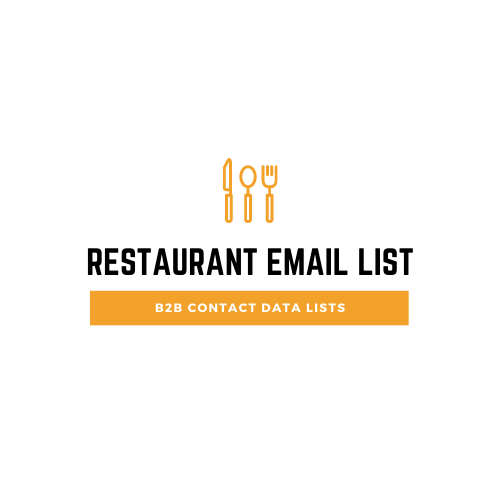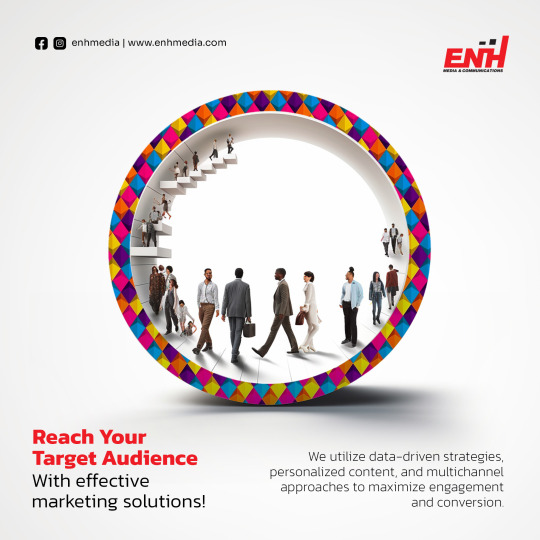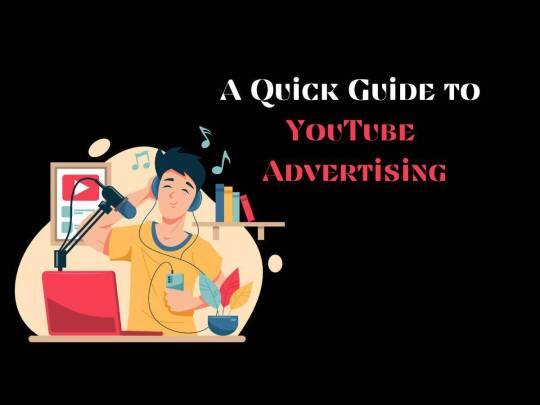#b2b lead generation
Text
AI Unleashed: Transforming B2B Trends with a Dash of Silicon Humour!

#aib2baughs#techtalks#techtrends#siliconhumor#aiunleashed#techinnovation#humorousai#b2bindemand#b2b services#emailmarketing#leadgeneration#b2bsales#b2bmarketing#b2b lead generation#artificial intelligence#funnyclient#funny#funny memes#funny stuff#funny shit#funny post
4 notes
·
View notes
Text
Unveiling the Dynamics of B2B Services: Navigating the Realm of Business Solutions
In the fast-paced world of commerce, Business-to-Business (B2B) services play a pivotal role in facilitating transactions, driving growth, and fostering collaboration among enterprises. From IT solutions to logistics, marketing services to financial consulting, B2B services encompass a wide array of offerings tailored to meet the diverse needs of businesses. In this blog, we delve into the intricacies of B2B services, exploring their significance, key features, and the evolving landscape in today's digital era.
2 notes
·
View notes
Text

At BrandDirect B2B, we're pioneering a transformative journey within B2B marketing, navigating the complex terrain of innovation and impact. We serve as a guiding light of ambition, committed to sculpting groundbreaking B2B Demand Generation campaigns that set new benchmarks for excellence.
2 notes
·
View notes
Text
How important b2b lead generation for a business?
B2B lead generation is incredibly important for businesses, especially those operating in competitive markets. Here are several reasons why:
Revenue Generation: Leads are the lifeblood of any business. Without a consistent stream of leads, a business can struggle to generate revenue and grow. B2B lead generation helps in identifying potential customers who are interested in the products or services offered, which ultimately leads to sales and revenue.
Business Growth: Generating quality leads allows businesses to expand their customer base and grow their market share. By consistently attracting new leads and converting them into customers, businesses can expand their reach and increase their influence in the industry.
Relationship Building: B2B lead generation isn't just about making a sale; it's also about building relationships with potential clients. By nurturing leads through the sales funnel, businesses can establish trust and credibility, which are essential for long-term customer relationships and repeat business.
Brand Awareness: Lead generation activities, such as content marketing and social media engagement, can help increase brand visibility and awareness within the industry. Even if leads don't immediately convert into customers, they may still become familiar with the brand, making them more likely to consider it in the future.
Cost Efficiency: While lead generation requires an initial investment of time and resources, it can ultimately be more cost-effective than traditional marketing methods. By targeting specific audience segments and channels, businesses can optimize their lead generation efforts to generate high-quality leads at a lower cost per acquisition.
In conclusion, B2B lead generation is crucial for businesses looking to sustainably grow and thrive in competitive markets. It enables businesses to generate revenue, build relationships, gain insights, and maintain a competitive edge in their industry.
For more:
Please reach out here,
If you have any questions or talk any bit more about your need.

#b2b#b2bmarketing#b2b lead generation#b2bsales#b2b services#business growth#b2b sales#ecommerce#ecommerce business#generate b2b leads#list building#saas marketing#email list#founder
2 notes
·
View notes
Text
4 notes
·
View notes
Text
dayhttps://demanday.com/how-demand-generation-will-help-transform-the-healthcare-industry/
#demanday#demandayb2b#digitalmarketing#leadgeneration#demandgeneration#b2bmarketing#b2b services#b2b lead generation#business growth
2 notes
·
View notes
Text
The Secret Sauce of Content Syndication: How to Supercharge Your Content Marketing Strategy
In the ever-evolving world of content marketing, content syndication emerges as a potent yet often overlooked secret weapon. Think of it like the final dash of spice that elevates your carefully crafted content to explosive new heights, reaching audiences beyond your immediate reach and amplifying your brand visibility.
Demanday Group: More than just a partner, an extension of your team.
2 notes
·
View notes
Text
3 notes
·
View notes
Text

Why Buy Restaurant Contact Data Lists from RestaurantEmailList.com?
RestaurantEmailList.com is a comprehensive and game-changing platform that serves as a treasure trove of information for professionals in the food industry. This innovative website offers an extensive collection of verified email addresses, phone numbers, mailing addresses and other crucial contact information belonging to restaurant owners and decision makers worldwide, making it an invaluable resource for marketers, suppliers, and anyone seeking to establish meaningful connections within this vibrant sector.
With its user-friendly interface and meticulously curated database, RestaurantEmailList.com ensures that you gain easy access to accurate and up-to-date contact details of restaurant owners, managers, chefs, and other key decision-makers. Whether you are looking to promote your products or services directly to these establishments or forge mutually beneficial partnerships with renowned culinary destinations across the globe, RestaurantEmailList.com is your answer, providing a gateway into the heart of the restaurant industry through it's highly targeted restaurant contact mailing lists and email databases.
Trustworthy and efficient in equal measure, RestaurantEmailList.com empowers businesses with unparalleled opportunities for growth by granting them direct access to potential clients who are eager to collaborate or invest in new ventures.
To browse thousands of mailing lists for direct mail marketing and email lists for email marketing campaigns aimed at restaurant owners, managers, and decision makers visit https://restaurantemaillist.com/buy-mailing-lists/
#business logo#new logo#b2b lead generation#b2bsales#restaurant business#restaurant owners#restaurant email list#email list#mailing list#mailing services#mailing list providers#restaurant leads
4 notes
·
View notes
Text

We're all about data-driven strategies, personalized content, and multichannel approaches to supercharge engagement and boost conversion rates. Let's make your brand stand out and shine in the digital world!
visit: https://shorturl.at/hmnQU
#digital marketing#seo#seocomapnmy#agency#dubai#uae#seoagency#seoservices#amrketing#leadgeneration#b2b lead generation#seo agency#seo dubai
2 notes
·
View notes
Text
3 notes
·
View notes
Text
ISProut DiGi Skillers⚡ Like a partner to achieve clients' Goals or Business Success.
🙋 ISProut DiGi Skillers: is a full-service digital marketing agency that specializes in providing a wide range of digital marketing services. Our 💁5 Years of Experience in the Industry.
💁Our team of experienced and talented professionals is committed to creating and executing Specific Niche Targeted Marketing Strategies. That increases traffic, improves rankings, drives results, and helps them achieve their Marketing Goals – Generating Sales Revenue.
Note: 🏅 we always ensure clients' Goal Success.
2 notes
·
View notes
Text
Mastering Success: Appointment Setting through Telemarketing and B2B Lead Generation
In the fast-paced world of business-to-business (B2B) interactions, securing appointments is often the crucial first step towards building meaningful relationships. Telemarketing, when coupled with effective B2B lead generation strategies, emerges as a powerful tool for businesses looking to not only connect with potential clients but also to set the stage for successful collaborations. In this blog, we will explore the art and science of appointment setting through telemarketing in the context of B2B lead generation.
The Role of Appointment Setting in B2B:
1. Building Relationships, Not Just Transactions:
In the B2B landscape, success is often rooted in the ability to build strong, enduring relationships. Appointment setting goes beyond mere transactions; it opens the door to meaningful conversations where needs, solutions, and potential collaborations are explored.
2. Trust and Credibility:
Securing an appointment demonstrates a level of interest and commitment from both parties. It serves as an opportunity to establish trust and credibility, laying the groundwork for a partnership based on mutual understanding and shared goals.
Telemarketing as a Strategic Tool:
3. Direct and Personalized Communication:
Telemarketing provides a direct and personalized channel of communication. Unlike email or other digital methods, a phone call allows for real-time interaction, enabling businesses to address concerns, answer questions, and tailor their pitch based on immediate feedback.
4. Navigating the Decision-Making Process:
B2B transactions often involve multiple decision-makers within an organization. Telemarketing allows for strategic navigation of this complex decision-making process by identifying key stakeholders, understanding their needs, and influencing the decision-making chain.
5. Customizing Pitches for Maximum Impact:
Telemarketers can tailor their pitches based on the specific needs and pain points of the prospect. This level of customization ensures that the value proposition is aligned with the prospect's requirements, increasing the likelihood of a positive response.
Effective B2B Lead Generation Strategies:
6. Comprehensive Data Analysis:
B2B lead generation starts with comprehensive data analysis. Identify your target audience, understand their industry challenges, and analyze their behavior to create a targeted approach. This data-driven strategy ensures that your telemarketing efforts are directed towards businesses that are more likely to benefit from your offerings.
7. Content Marketing for Thought Leadership:
Establishing your business as a thought leader in your industry through content marketing enhances your credibility. Valuable content positions your company as an expert, making prospects more receptive to appointment requests during telemarketing calls.
8. Utilizing CRM Systems:
Customer Relationship Management (CRM) systems play a crucial role in B2B lead generation. These systems help in organizing and managing lead data, tracking interactions, and ensuring that telemarketers have the necessary information to engage in meaningful conversations during calls.
The Art of Appointment Setting:
9. Effective Scripting and Training:
Crafting an effective telemarketing script is an art. It should be concise, engaging, and tailored to the specific needs of the B2B audience. Training telemarketing representatives on effective communication, objection handling, and relationship building is equally important.
10. Follow-Up Strategies:
Not every call will result in an immediate appointment. Implementing robust follow-up strategies is crucial. This may include sending additional resources, scheduling follow-up calls, or providing further information to address any concerns raised during the initial conversation.
Conclusion:
Appointment setting through telemarketing is a dynamic process that requires a strategic blend of personalized communication, data analysis, and effective lead generation. By understanding the nuances of B2B interactions and adopting a comprehensive approach that integrates telemarketing with targeted lead generation strategies, businesses can unlock the potential for meaningful collaborations and long-term partnerships. In the ever-evolving world of B2B, mastering the art of appointment setting is not just a transactional endeavor but a journey towards building lasting relationships and fostering mutual success.
posted by johnsaleswolfs this site help to growth your business with the services of digital marketing , B2B lead generation and telemarketing .
2 notes
·
View notes
Text
Even as enterprises grapple with the challenge of generating qualified leads that fuel growth, outbound emails remain a crucial tool for businesses to connect with potential customers and drive engagement. Running effective outbound email campaigns involves a delicate balance of strategy and personalization.
2 notes
·
View notes
Text
Setting Up Your First YouTube Ad Campaign: A Comprehensive Guide

As the second largest search engine globally, YouTube offers unparalleled opportunities for businesses to reach a vast array of audiences through advertising. From boosting brand awareness to enhancing engagement and driving sales, YouTube ads can be a powerful tool for achieving your marketing goals. If you're taking the plunge into the world of YouTube advertising for the first time, here's a comprehensive guide to setting up your first YouTube ad campaign.
Step 1: Understand the Different Types of YouTube Ads
Before setting up your YouTube ad campaign, familiarize yourself with the different types of YouTube ads:
* Skippable in-stream ads: These ads appear before, during, or after a video. Viewers have the option to skip these ads after the first 5 seconds.
* Non-skippable in-stream ads: These ads also appear before, during, or after a video but they last 15-20 seconds and viewers cannot skip them.
* Discovery ads: These ads appear in search results when someone searches on YouTube or on the YouTube homepage and the watch page.
* Bumper ads: These are non-skippable ads of 6 seconds that a viewer must watch before watching the desired video.
Select the ad format that aligns with your goals, budget, and target audience.
Step 2: Set Up Your YouTube Channel and Google Ads Account
If you haven't done so yet, you'll need to set up a YouTube channel for your business. You'll also need a Google Ads account, as this is where you'll actually create, manage, and evaluate your YouTube ad campaigns.
Step 3: Create a New Campaign
Sign in to Google Ads and click on the "+ New Campaign" button. You'll be prompted to choose a campaign goal from options such as Sales, Leads, Website traffic, Product and brand consideration, and Brand awareness and reach. Select the one that aligns with the objectives for your ad campaign.
Step 4: Determine Your Ad Type and Budget
Next, you'll choose "Video" as your campaign type. After that, select the subtype of ad you wish to run — for example, a skippable in-stream ad or a non-skippable in-stream ad. Set your budget. You can choose a daily amount or a total amount for the campaign.
Step 5: Define Your Target Audience
Deciding who you want to reach is crucial. You can target your audience by demographic (age, gender, parental status, income), interests, search history, and more. You can also tailor your audience based on connections, remarketing, or customized audiences.
Step 6: Choose Your YouTube Video
To select the video you wish to promote, paste the URL of the video in the "Your YouTube video" section. Ensure the video is public or unlisted; private videos cannot be promoted.
Step 7: Configure Additional Settings
This includes defining where you want your ad to show up – YouTube search results, YouTube videos, and video partners on the display network. You can also determine the schedule for your ad, how often a viewer can see your ad, and set the maximum amount you want to pay each time someone views your ad.
Step 8: Implement Conversion Tracking
Conversion tracking allows you to see what happens after a customer interacts with your ads — whether they purchased your product, signed up for your newsletter, called your business, or downloaded your app.
Step 9: Review and Launch Your Campaign
Last but not least: review all your settings and make sure everything aligns with your goals. Once you're happy with everything, go ahead and click "Create Campaign."
Conclusion
Setting up your first YouTube ad campaign can seem daunting, but it’s a step-by-step process that can drive substantial results once correctly implemented. As your experience grows, continually monitor, tweak, and fine-tune your campaigns to achieve the optimal success rate for your business.
#youtube#youtube marketing#youtube monetization#youtube advertising#youtube ads#ads#b2b lead generation
2 notes
·
View notes
Text
Understanding User-Centered Design: The Key to Creating B2B Websites That People Love
User-centered design (UCD) stands as a guiding principle, a philosophy that places the user at the heart of the web design process. It's a mindset that recognizes the importance of understanding user needs, behaviors, and expectations to craft websites that not only look stunning but also deliver exceptional user experiences.
If you need your B2B website then get in touch with someone who knows all the basic principles of web design, specifically UCD like B2B web design service providers.
1. Empathy: Stepping into the User's Shoes
Empathy is the cornerstone of user-centered design. It involves understanding the user's perspective, their motivations, frustrations, and goals. To achieve this, designers employ various techniques, including user research, interviews, surveys, and observation.
Empathy in Action:
Understanding User Needs: By conducting user interviews and surveys, designers gain insights into the specific needs and expectations of their target audience. They identify the challenges users face, the tasks they want to accomplish, and the information they seek.
Creating User Personas: Personas are fictional representations of typical users, embodying their characteristics, behaviors, and goals. By creating personas, designers can better understand the diversity of their user base and design for specific user groups.
User Journey Mapping: User journey maps visually depict the steps a user takes to achieve a specific goal on a website. By mapping out these journeys, designers can identify potential pain points and design solutions that streamline the user experience.
2. Iterative Design: A Continuous Process of Refinement
Iterative design is a cyclical process that involves continuous testing, feedback, and refinement. It recognizes that user needs and expectations evolve, and the website must adapt accordingly.
Iterative Design in Action:
Prototyping: Prototypes are early versions of a website or specific features, allowing designers to test concepts and gather user feedback before investing in full-scale development.
Usability Testing: Usability testing involves observing users interacting with the website to identify areas of confusion, frustration, or inefficiency. This feedback is then used to refine the design and improve the user experience.
Data Analytics: Web analytics provide valuable insights into user behavior, revealing how users navigate the website, which features they use most, and where they encounter difficulties. This data informs design decisions and helps optimize the user experience.
3. Clarity and Simplicity: Guiding Users to Their Goals
A user-centered B2B website prioritizes clarity and simplicity, ensuring that users can easily find the information they need and complete tasks without confusion or frustration.
Clarity and Simplicity in Action:
Intuitive Navigation: The website's navigation should be logical and intuitive, allowing users to quickly find the information they need. Clear menus, breadcrumbs, and search functions facilitate easy navigation.
Information Architecture: The information architecture refers to the organization and structure of content on the website. A well-structured information architecture ensures that content is easy to find and understand.
Clear Calls to Action: Calls to action (CTAs) should be clear, concise, and visually prominent, guiding users towards the desired actions, whether it's signing up for a newsletter, downloading a whitepaper, or contacting sales.
4. Personalization: Tailoring Experiences for Individual Users
Personalization involves tailoring the website experience to individual users based on their interests, behaviors, and past interactions. It creates a more relevant and engaging experience for each user.
Personalization in Action:
Content Recommendations: Based on a user's past browsing behavior and interests, the website can recommend relevant content, such as blog posts, case studies, or product information.
Personalized Search Results: Search results can be personalized based on a user's search history and preferences, ensuring that the most relevant results are displayed first.
Tailored Marketing Messages: Based on a user's profile and actions, the website can display personalized marketing messages, such as offering discounts or promoting relevant products or services.
5. Accessibility: Designing for All
Accessibility ensures that the website is usable by everyone, regardless of their abilities or limitations. It's about creating an inclusive experience that caters to a diverse audience.
Accessibility in Action:
Alt Text for Images: Providing alternative text descriptions for images ensures that visually impaired users can understand the content of images using screen readers.
Clear Color Contrast: Using sufficient color contrast between text and background makes it easier for users with visual impairments to read and navigate the website.
Compatibility with Assistive Technologies: The website should be compatible with assistive technologies, such as screen readers and voice control software, allowing users with disabilities to interact with the website effectively.
6. Measuring Success: Data-Driven Insights
Measuring the impact of design decisions is crucial for continuous improvement. Analytics and user feedback provide valuable insights into user behavior and satisfaction.
Measuring Success in Action:
Website Analytics: Web analytics tools track user behavior, revealing how users navigate the website, which pages they visit, and how long they stay. This data helps identify areas for improvement and optimize the user experience.
User Feedback Surveys: Surveys and feedback forms allow users to directly share their thoughts on the website's usability, design, and functionality. This feedback can be used to identify pain points and make targeted improvements.
A/B Testing: A/B testing involves comparing two versions of a webpage or feature to determine which one performs better. This data-driven approach helps optimize conversion rates and improve user engagement.
7. The Rewards of User-Centered Design
Adopting a user-centered approach to B2B web design yields tangible benefits for businesses:
Increased User Engagement and Satisfaction: A user-friendly website keeps users engaged, encourages repeat visits, and fosters positive brand sentiment.
Improved Conversion Rates and Lead Generation: A well-designed website effectively guides users towards desired actions, such as signing up for a newsletter, requesting a demo, or making a purchase.
Enhanced Brand Reputation and Customer Loyalty: A positive user experience strengthens brand perception and builds customer loyalty, leading to long-term business success.
Reduced Support Costs and User Frustration: A user-centered website minimizes user frustration and the need for support, saving businesses time and resources.
User-Centered Design: A Path to Success
By embracing user-centered design, businesses can create B2B websites that not only look great but also deliver exceptional user experiences. This approach leads to increased engagement, improved conversions, and enhanced brand reputation, ultimately driving business growth and success.
#ecommerce#branding#marketing#brand#digitalmarketing#brand new#branddevelopment#entrepreneur#guide#b2b#b2b lead generation#b2bmarketing#b2b services#startup
4 notes
·
View notes